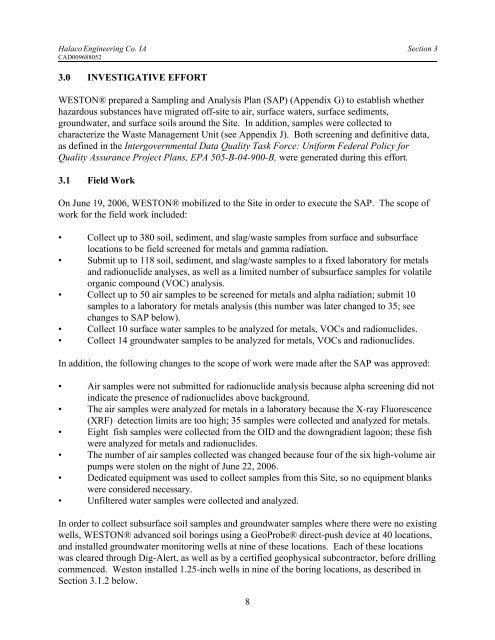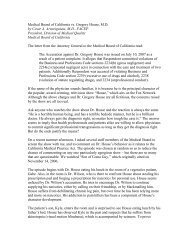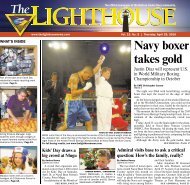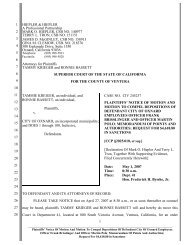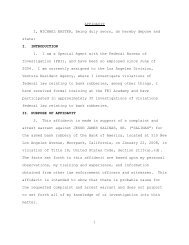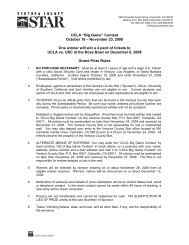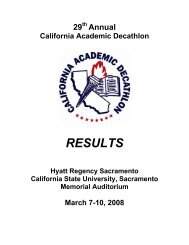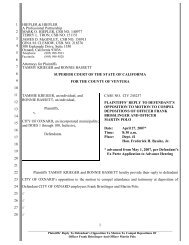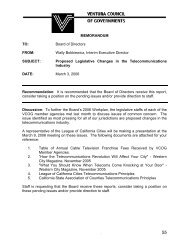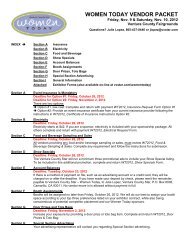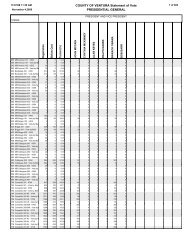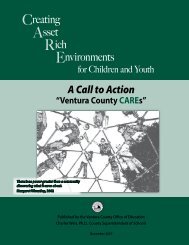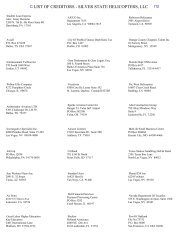Integrated Assessment Halaco Engineering Company ... - Archives
Integrated Assessment Halaco Engineering Company ... - Archives
Integrated Assessment Halaco Engineering Company ... - Archives
You also want an ePaper? Increase the reach of your titles
YUMPU automatically turns print PDFs into web optimized ePapers that Google loves.
<strong>Halaco</strong> <strong>Engineering</strong> Co. IA Section 3<br />
CAD009688052<br />
3.0 INVESTIGATIVE EFFORT<br />
WESTON® prepared a Sampling and Analysis Plan (SAP) (Appendix G) to establish whether<br />
hazardous substances have migrated off-site to air, surface waters, surface sediments,<br />
groundwater, and surface soils around the Site. In addition, samples were collected to<br />
characterize the Waste Management Unit (see Appendix J). Both screening and definitive data,<br />
as defined in the Intergovernmental Data Quality Task Force: Uniform Federal Policy for<br />
Quality Assurance Project Plans, EPA 505-B-04-900-B, were generated during this effort.<br />
3.1 Field Work<br />
On June 19, 2006, WESTON® mobilized to the Site in order to execute the SAP. The scope of<br />
work for the field work included:<br />
• Collect up to 380 soil, sediment, and slag/waste samples from surface and subsurface<br />
locations to be field screened for metals and gamma radiation.<br />
• Submit up to 118 soil, sediment, and slag/waste samples to a fixed laboratory for metals<br />
and radionuclide analyses, as well as a limited number of subsurface samples for volatile<br />
organic compound (VOC) analysis.<br />
• Collect up to 50 air samples to be screened for metals and alpha radiation; submit 10<br />
samples to a laboratory for metals analysis (this number was later changed to 35; see<br />
changes to SAP below).<br />
• Collect 10 surface water samples to be analyzed for metals, VOCs and radionuclides.<br />
• Collect 14 groundwater samples to be analyzed for metals, VOCs and radionuclides.<br />
In addition, the following changes to the scope of work were made after the SAP was approved:<br />
• Air samples were not submitted for radionuclide analysis because alpha screening did not<br />
indicate the presence of radionuclides above background.<br />
• The air samples were analyzed for metals in a laboratory because the X-ray Fluorescence<br />
(XRF) detection limits are too high; 35 samples were collected and analyzed for metals.<br />
• Eight fish samples were collected from the OID and the downgradient lagoon; these fish<br />
were analyzed for metals and radionuclides.<br />
• The number of air samples collected was changed because four of the six high-volume air<br />
pumps were stolen on the night of June 22, 2006.<br />
• Dedicated equipment was used to collect samples from this Site, so no equipment blanks<br />
were considered necessary.<br />
• Unfiltered water samples were collected and analyzed.<br />
In order to collect subsurface soil samples and groundwater samples where there were no existing<br />
wells, WESTON® advanced soil borings using a GeoProbe® direct-push device at 40 locations,<br />
and installed groundwater monitoring wells at nine of these locations. Each of these locations<br />
was cleared through Dig-Alert, as well as by a certified geophysical subcontractor, before drilling<br />
commenced. Weston installed 1.25-inch wells in nine of the boring locations, as described in<br />
Section 3.1.2 below.<br />
8


